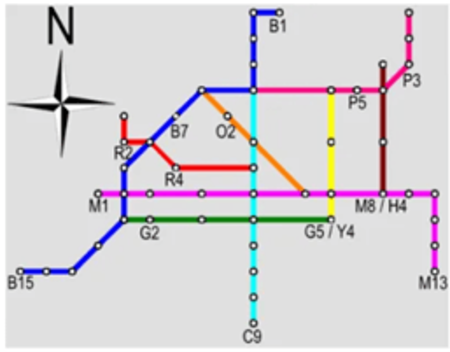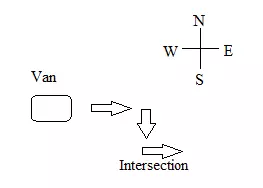Candidates applying for entry-level positions in law enforcement will often face spatial orientation questions as a regular part of their law enforcement examinations. Different versions of spatial orientation sections appear in different types of examinations but, regardless of the specific type, you will almost certainly need to know how to pass a spatial orientation test if you want to work in law enforcement.
On this page we explain:
- The importance of spatial orientation skills for law enforcement work.
- The different types of questions that candidates may need to answer.
- The best strategies for maximizing your performance on this type of question.
What Is Spatial Orientation?
Spatial orientation measures a candidate’s ability to navigate their surroundings and to describe spatial references in verbal form.
In other words, a law enforcement officer must be capable of navigating their surroundings based on a map, finding their way to a location based on verbal directions, as well as providing verbal directions to a location.
For this reason, most law enforcement tests include a range of questions intended to evaluate a candidate’s spatial orientation skills. That includes tests such as the MTA police exam, the NCJOSI (National Criminal Justice Officer Selection Inventory), and the NYPD exam.
Further below we give several examples of the most common types of police spatial orientation questions.
Sample Police Spatial Orientation Questions
In the spatial orientation section of the test, you will be typically shown a map, and then have to answer several questions related to it.
Here are some sample spatial orientation questions you may encounter on a law enforcement test. If you would like to test yourself with more police exam sample questions, you can do so here.
Police Spatial Orientation Sample Question #1
use the map below to answer the question.

What should you report on your radio?
“The suspicious van is heading..”
Police Spatial Orientation Sample Question #2:
The map below is a scheme of subway lines in the city.
Each line is marked by a different color and is associated with a different letter. Stations are numbered by their location on the line(s). The numbering of the stations progresses from the beginning of the line to its end. Lines always begin at the northernmost station, except for lines G and M which begin at the westernmost station. Codes associated with some of the stations have been written below them.
A station can have more than one code associated with it, as some stations have more than one line passing through them.

What Makes Police Spatial Orientation Questions Challenging?
There are several important features to the Spatial Orientation questions that are meant to challenge candidates. These are meant to imitate difficulties that the candidate may face during real-world police work.
- Questions are not necessarily worded in a formal way. Like the first sample question above, sometimes the text you need to read is worded to resemble a citizen’s description of an incident.
- You will be working under a time constraint. Different tests are more or less strict on this, but time constraints are a necessary feature of Spatial Orientation tests.
- The maps that are used sometimes have non-standard markings or features that mean your regular map-reading skills may not necessarily carry over well.
What Do Police Spatial Orientation Questions Measure?
The skills that are tested in the spatial orientation section of law enforcement tests are essentially a specific version of a selection of skills that a candidate should already have. The test evaluates a candidate’s reading comprehension abilities, their critical thinking abilities, and their abilities to understand visual instruction, as well as – of course – their ability to do all this under time constraints.
In the real world, tasks are not neatly divided into ‘verbal reasoning’ and ‘visual reasoning’ tasks, and the Spatial Orientation test is meant to evaluate a candidate’s ability to deal with challenges that call for a number of different skills.
For this reason, you will need to build on your ability to resolve more neatly categorized ‘verbal reasoning’ or ‘visual reasoning’ questions and apply these skills to these new, more advanced questions.
How to Answer Spatial Orientation Questions?
Here are some strategies you can use:
- Pay attention to both the verbal and the visual elements of the question – they are meant to overlap.
- If there is a phrase before the description of a map that says ‘arrows mean the direction of travel’ or ‘this marking on the map means road works’ or any other such description – pay attention to the markings. This is a hint you will be asked questions that deal with this specific aspect of the map.
- Clearly, you cannot expect to master this test, or most other law enforcement tests, just based on your previous learning. You need to prepare.
To do this, it’s best to use sample questions and prep packs and practice by answering them, ideally with a time limit that simulates the real time limit that you will face in the actual test. You need to do it again and again until you acquire confidence. This will ensure you are calm and professional when you approach the real thing.
Start practicing with a comprehensive preparation pack covering all topics on the police written test, including spatial reasoning. Practice questions and extensive explanations focused on the types of spatial questions you will find on your actual police test.
Learn more about the Police Test Preparation OR find the accurate preparation for your specific police test.
Related Links
-Free CJBAT Practice Test





